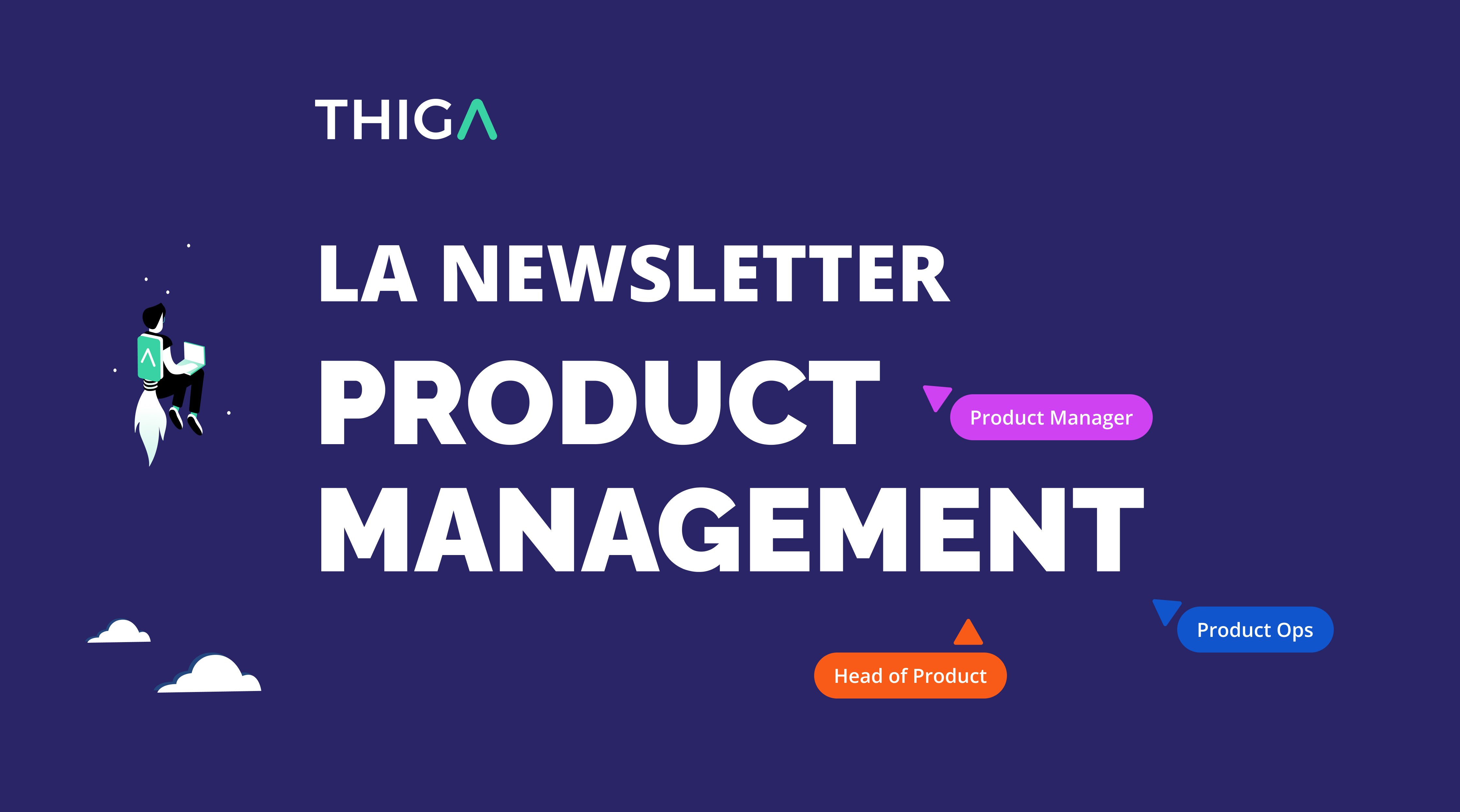In 2024, Artificial Intelligence (AI) confirms its status as a technological revolution and a crucial strategic lever. Through the feedback from our consultants, learn how to effectively incorporate AI into your product to solve concrete problems and enhance its value.
Artificial Intelligence (AI) is the story of a great fear of missing out since the launch of ChatGPT. Everyone wants it, but not necessarily knowing what for… What if the secret isn't to do AI just for the sake of it, but to use it to serve your strategy, your goals, and your users?
🧐 Starting with the problem you need to solve
AI is not different from other improvements you can make to your product: before asking yourself how you can incorporate it, ask yourself why. It's not about adopting AI out of principle, but starting from the problems encountered by your users or your organization, and considering it as one solution among others.
This is how many companies have incorporated AI features, long before the explosion of generative AIs. For years, Facebook used to task armies of human operators with the repetitive job of identifying content that was violating its terms of use. Faced with the time-consuming and costly nature of such a task, the Californian giant decided to entrust much of it to algorithms.
If you want AI to truly add value to your product, your approach must start with problem-centered thinking. But once you've identified your problem, how can you make sure that AI can provide a satisfying solution?
Find your Problem-Solution Fit
To consider AI as a potential solution, you need to know its main types and especially its main use cases. It is also important to have a good understanding of what AI can and cannot bring to your product. Jennifer Palhares, a Thiga consultant at Tiime, an online billing and accounting solution, provides an example: "Today, at Tiime, the Machine Learning team automates pre-accounting tasks such as labeling bank transactions and documents as well as their matching. The goal is to reduce the number of actions and thus the time a human has to spend on a file for their accounting to be generated. It's a real value-add in terms of time and energy for all users." A use case that shows that AI typically allows for the performance of simple, yet repetitive tasks.
If AI can address a given problem, you still need to prioritize potential solutions (with or without Artificial Intelligence). My advice: don't rush in head-first and start by considering a solution without AI. For example, if you want to implement a personalized recommendation engine for a video platform or an e-commerce site, start by deploying this feature without AI. This will allow you to validate your Problem-Solution Fit and ensure that your new feature truly generates the expected value. Before embarking on costly automation efforts, always consider the opportunity cost: if you can perform a task without AI, what additional value justifying the required investment would AI bring?
Start with a small project, low in technical complexity but with high added value.
Be cautious: Haoitif Dellaoui, Thiga consultant at La Centrale, reminds us that "when we talk about value delivered by an AI, it's not just about the technical performance of the model (its accuracy, for example) but about its impact on users and the business."
Balance the use of Artificial Intelligence
Incorporating AI into your product is not a binary process: you can incorporate more or less automation into a given task or feature. Therefore, it's important to position the different possible solutions on an automation scale. Artificial Intelligence allows you to aim for different levels of task automation, whether internal (performed by collaborators) or external (performed by your users or customers).
If you're getting started regarding AI, don't lose sight of the principles of agility and start with a small project, low in technical complexity but with high added value. This will allow you to get results quickly. In addition to satisfying your users, you will evangelize about the benefits of AI within your own organization. Conversely, an oversized initial project could flounder... And discredit AI among your teams!
At La Centrale, Haoitif Dellaoui adopted this gradual approach to design a new AI solution to moderate messages: "The iterative approach avoids launching into long, tedious developments with no guarantee of results. It also allows testing and analyzing different results and feedback from the model over a defined period. Thanks to this, we were able to meet the business objectives set at the start of the project."
Finally, good prioritization involves estimating the level of effort required by your initiative. To assess its technical feasibility and complexity, you will need the right people. This leads us to consider the necessary conditions for the proper planning of an AI project.
🤖 Considering the specificities of AI
Surround yourself with the right profiles
If you decide to embark on the great adventure of Artificial Intelligence, start by thinking about the skills you’ll need and surround yourself with key profiles, whether they are internal or external to your organization.
- Data Engineers to organize and build your databases, not forgetting developing the right data pipelines to feed them.
- Data Scientists to develop your models.
- Machine Learning Engineers to put them into production.
- Data Analysts
- At least one Data / AI Product Manager, this increasingly needed type of PM. They orchestrate the team's work, coordinate it with the other stakeholders, and ensure it serves the strategic objectives of your product and your company.
Note that thanks to the advances in generative AI, it is much easier to launch AI features without requiring such specialized profiles. A traditional development team can certainly develop certain applications based on a third-party LLM: building a chatbot powered by ChatGPT, using applications like Dust or Memory to extract information from documents or web pages…
Prepare your data
The second condition for incorporating AI into your product is data. Any project of the sort requires you to be prepared to collect, store, and properly exploit data. If you don't have enough, two options are available to you.
- Set up data collection with your data teams. This will allow you to benefit permanently from proprietary data over which you control the quality. However, it will require more time to set up that collection and then accumulate a sufficient quantity of data.
- Buy third-party data (sometimes in addition to your own). Benjamin Danel, Thiga consultant for a major cosmetics group, testifies: "Before launching its skin analysis tool, the company bought a data bank with skins of different shades, showing different skin problems, to ensure the relevance of the diagnosis and avoid a non-inclusive bad buzz."
Raise awareness among your stakeholders
The last condition: educating your stakeholders. They must be sensitized to the general functioning of AI, but also to some of its specificities:
- The timing of an AI project, potentially longer than for a classic project, especially at the beginning of your learning curve.
- The inherent uncertainty of any Artificial Intelligence model and how difficult it is to guarantee its results in advance.
- The risks to be managed, particularly in terms of data privacy. To minimize these risks, communication with your data science teams will be key, to finely define the need, and to clearly delineate the project – don't bite off more than you can chew!
📱 Incorporating design into your AI features
Now, let's return to our AI product development cycle: we've identified a problem, prioritized a solution… But now, how shall we design it?
Thiga Product Designer Éva Zuliani reminds us of the importance of involving Designers early in the thought process on your AI projects: "Designing an AI feature without Product Designers is taking the risk of designing features poorly received by users”, she points out. "Yet, Designers can contribute at least during two critical phases: the identification of use cases where AI would be relevant, and the design of the features themselves. It is up to the PMs to master the subtle art of delivering the right level of technical information to Designers!"
A typical case of Design thinking applied to an AI feature? The question of transparency. How do you let your users know that they are using a feature based on Artificial Intelligence, while integrating this feature smoothly into your UX? Below is the example of Notion, where the use of AI is both integrated into the search module but remains identifiable by its location and its specific visual identity (notably the purple color, frequently applied to AI).
Highlighting AI-assisted search on Notion.
Don't forget that in terms of AI, its use is not an end in itself. It's just the beginning of a process of measurement and continuous improvement: it would be a shame not to capitalize on what makes machine learning so powerful, namely a model’s ability to learn and improve based on the data you provide it with! Hence the importance of setting up procedures for data collection (passive) and feedback consideration (active).
In conclusion, remember that it is critical not only to catch the train of Artificial Intelligence but to put it at the service of your strategy, your goals, and your users. AI is not a purpose, just a means to be more effective.
It’s through this mindset that you will ambitiously yet realistically incorporate AI into your product. From now on, it’s up to you!
To learn more: download our book Agile Product Management





